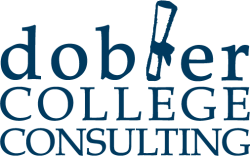How Much Is That College In The Window?
The other day I was working with a student who ended up learning a lot about the difference between sticker price and net price. The student in question was interested in architecture but assumed that schools who offer the program would cost him too much. In fact, he was prepared to give up on the idea of architecture and pick a different major altogether so that he could attend a local state school here in Connecticut just to save money.
While this is not meant to be a knock on our state schools (I’m a product of two of them), this is a knock on a system that had so far prevented this young man from truly understanding his options.
I proceeded to pull up the College Board website so that I could show him the difference between sticker price and net price. Since he wanted to stay in the Northeast, we narrowed his search down to several schools in the New England and Mid-Atlantic region. For the purpose of this blog, I randomly selected three schools from the list we generated: Lehigh University, Temple University, and Philadelphia University.
Going by the assumptions the student was making about sticker price, one year of college would cost him $55,515 at Lehigh, $38,935 at Temple and $46,282 at Philadelphia. Each one of them a prohibitive cost. But then I showed him the Paying tab on the College Board website and how he needed to look beyond the sticker price of each institution. Upon doing so, I was able to show him that Lehigh’s average first year financial aid package is $34,773 making their net price $20,742. Temple’s average package was $15,373 bringing the net price in at $23,562. Philadelphia University gives freshmen $28,220 to bring the true price down to $18,062.
All of a sudden, not so prohibitive.
Seeing as how this student’s grades and SAT scores fell within the top 25% of admitted students for each school, it’s a safe bet to say he’s probably going to receive the average package from each school. In fact, he may receive financial aid packages that are better than the average.
Another way to figure out what a school is going to cost you is to use a net price calculator. Colleges are now required to include one on their website, though some are easier to find than others. These calculators will ask you to enter some personal information and will then compute an estimated net price. Not all calculators are created equal so be sure to pay close attention to the breakdown of loans, grants and merit money when you get your net price results.
At the end of the day, as this student learned, it pays to do your homework.
If you have questions about net price or would like some help figuring out how to reduce the cost of college, use the comment box below or email me directly at eric@doblercollegeconsulting.com. I would love to hear from you!

